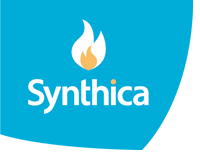RNG – or Renewable Natural Gas – is a form of natural gas that is created by breaking down organic feedstocks from sources such as industrial food waste and food scraps, municipal wastewater, or carbon sources such as paper or wood. Collectively, the facilities that produce RNG from these feedstock sources can be referred to as “Bioenergy Conversion Facilities”.
Unlike solar or wind, RNG can be produced 24×7 by feeding a constant stream of feedstock into a plant. So while the sun goes down and the wind stops blowing, RNG can provide baseload power instead of resorting to coal or fossil fuel fired gas power plants.
RNG is considered a negative carbon and negative greenhouse fuel – because not only does it take the place of a fossil fuel, but it captures and “destroys” methane that would otherwise leak into the atmosphere through the natural decay of feedstocks (a greenhouse gas that is approximately 30 times more heat trapping than CO2). Additionally, since conversion plants can be built closer to feedstock producers, its use drastically reduces the burning of diesel in trucks to transport feedstocks vast distances.
When compressed and used as a vehicle fuel, this means that the use of RNG can have anywhere from a 125% to 400% reduction in greenhouse gas emissions when compared to traditional sources.
Not only that, but its use saves customers money by reducing more expensive waste disposal options, and cutting the transportation necessary to get to those disposal sites.
Sources:
https://ww3.arb.ca.gov/research/apr/past/13-307.pdf
https://www.energy.gov/sites/prod/files/2016/12/f34/2016_billion_ton_report_12.2.16_0.pdf
https://ww3.arb.ca.gov/fuels/lcfs/fuelpathways/pathwaytable.htm



